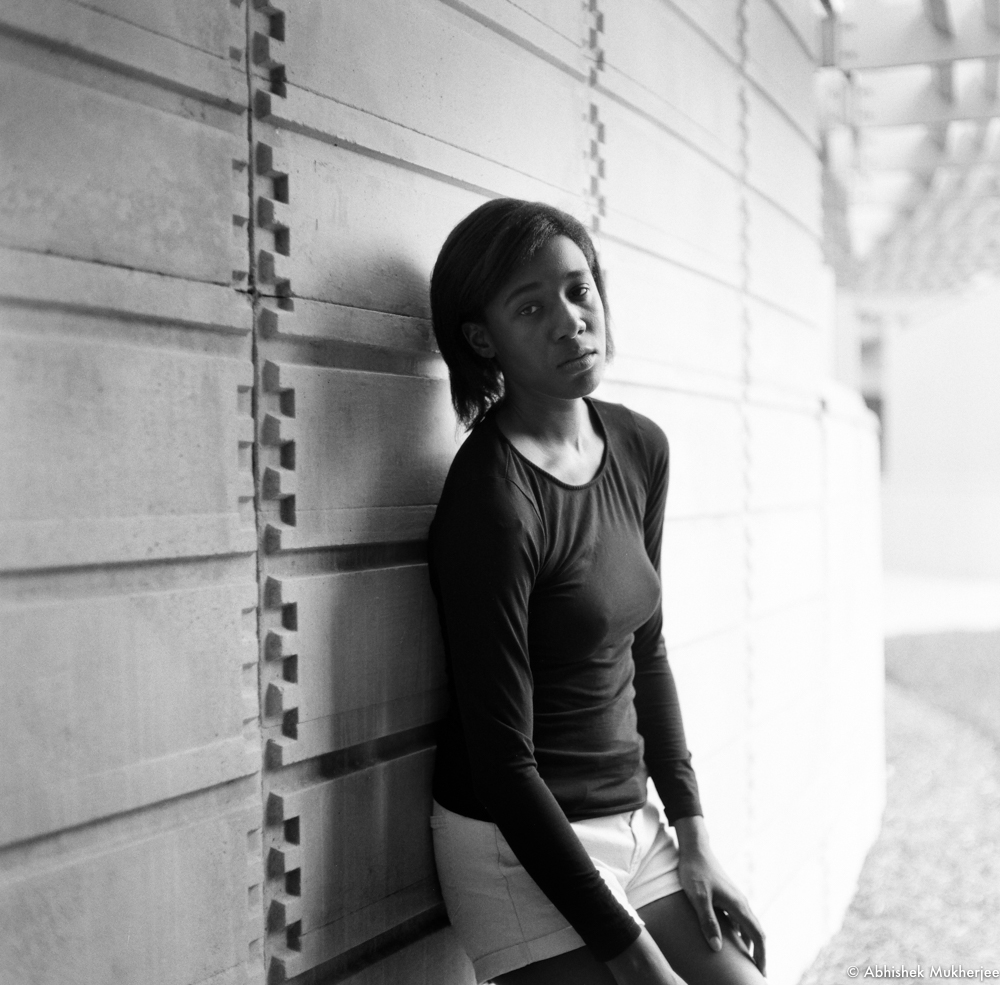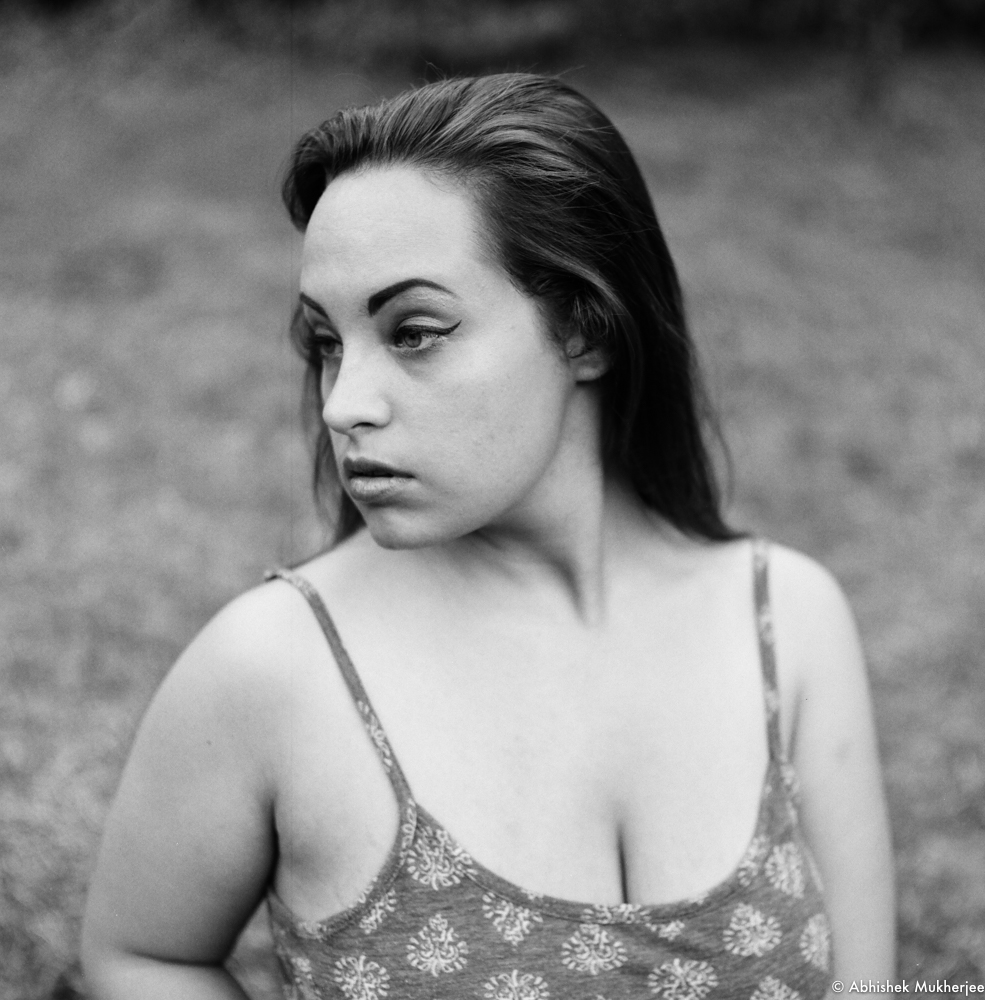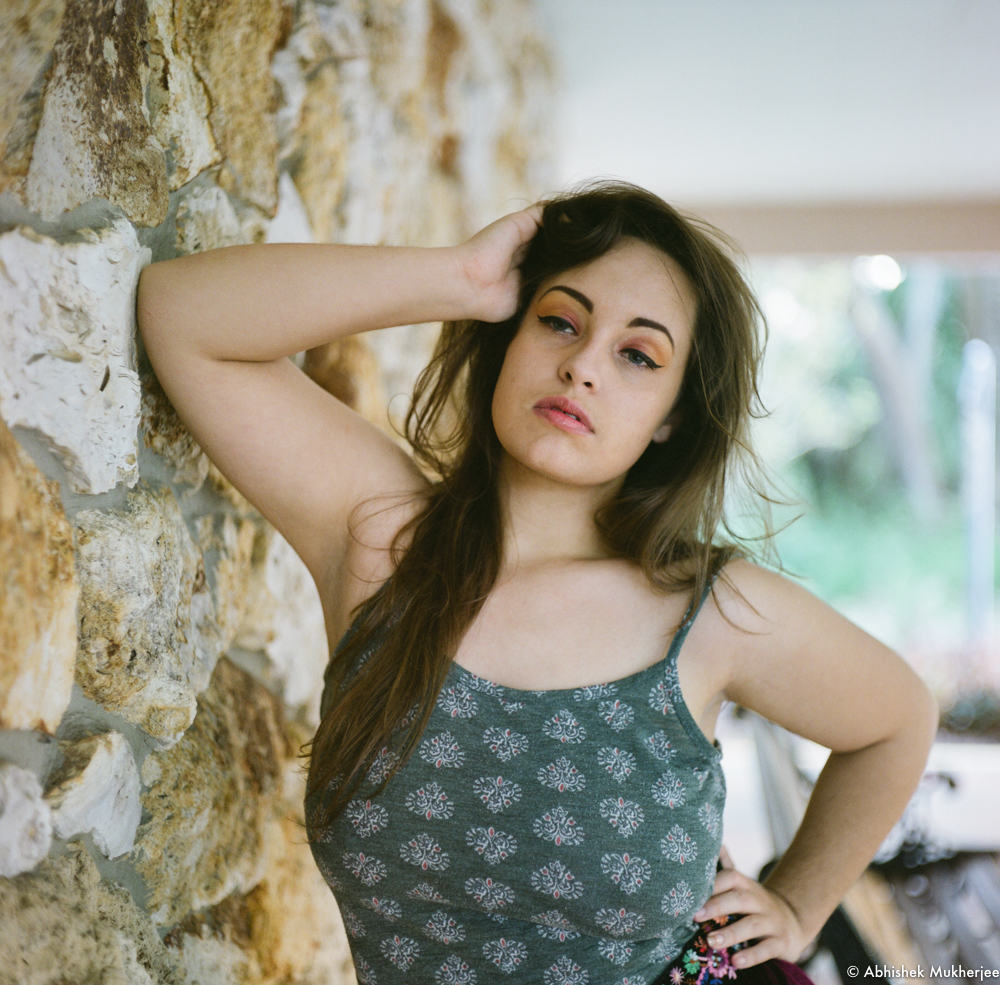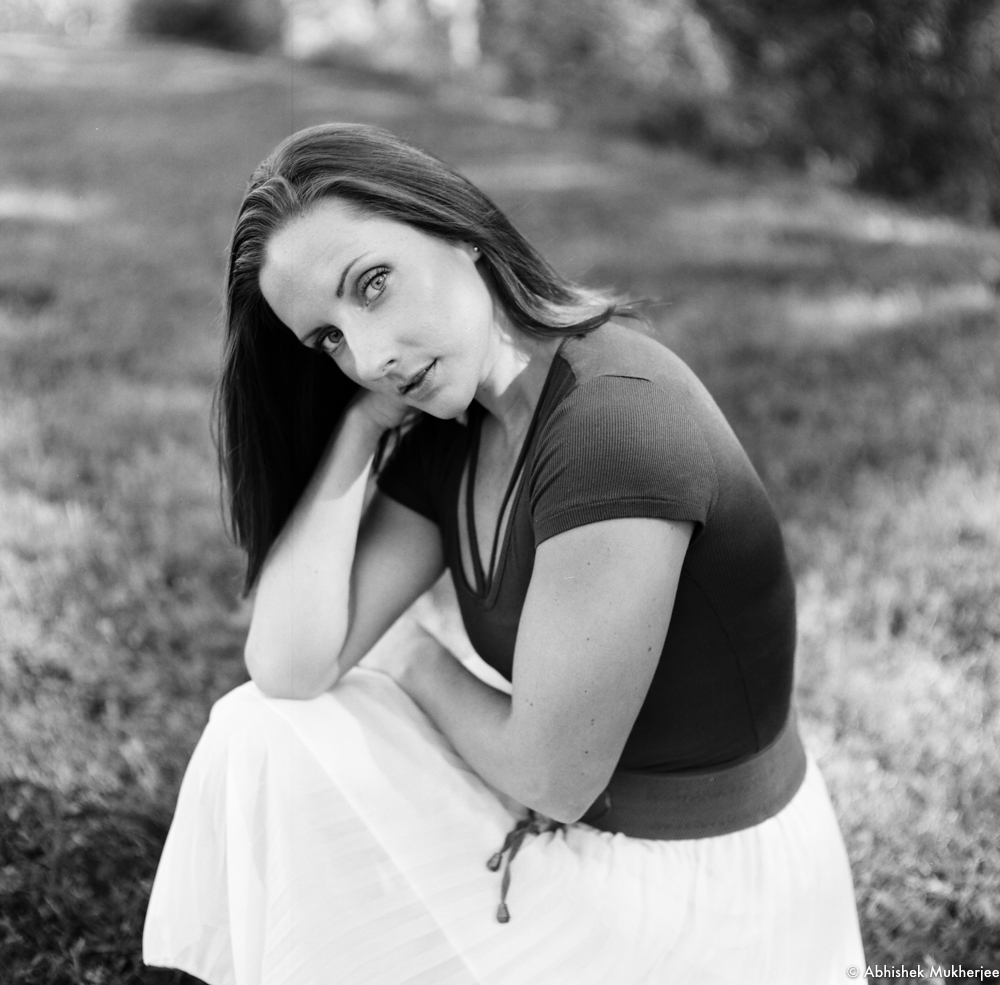Taryn
Taryn and I met at the Florida Southern Campus a few weekends ago. We met at 10 AM, a departure from my typical afternoon shoots. The last time I worked with a model among Frank Lloyd's architecture was five years ago. It was nice to come back to this campus.
I started our session with the Nikon FE 35mm film camera. Pretty much all those photos are crap. However it gave us a chance to understand each other's working style before switching to the Mamiya C220.
I shot two rolls of Fuji Pro 400H, one roll of Ilford Delta 100 and one roll of Ilford FP4. Total 48 frames. I am not thrilled by the photos from the color film that we took under the shaded esplanade: too much grain and dull colors. The Fuji, however performed quite well directly under bright clouds.
I love, love the photos from the Delta 100 (see white tank top). I think I prefer them over the photos form Ilford FP4 (photos in black long sleeved tee). I barely edited the Delta 100 photos but I had to adjust contrast in every FP4 image I liked.
Finally, I am starting to prefer the fashion-ey poses over the straight portrait poses. We will see where I go with this.



































